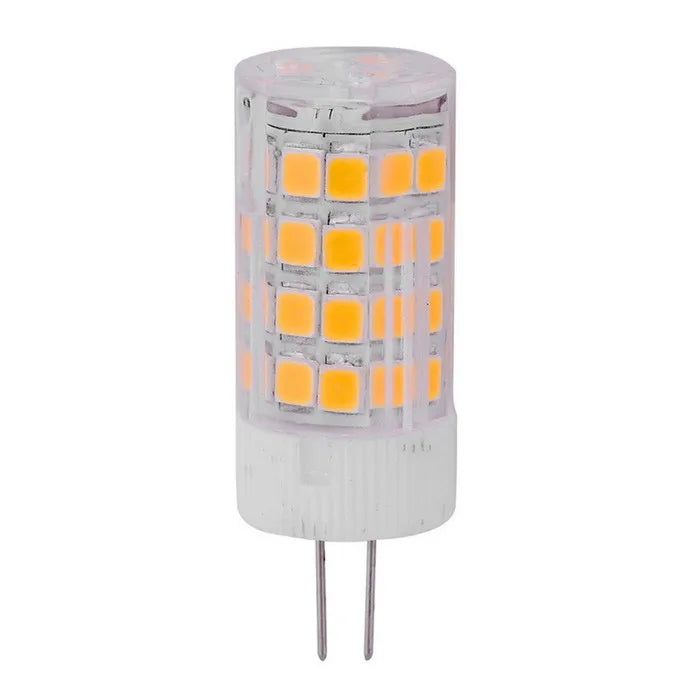With the continuous advancement of LED lighting technology, LED light bulbs have become the preferred choice for residential, commercial, and industrial applications. However, with the wide variety of LED products on the market, consumers often face common questions: Why do prices vary so much? Why do bulbs of the same wattage have different brightness? Why do some bulbs maintain consistent color while others appear yellowish or bluish? These issues are directly related to the core performance metrics of LED bulbs, including luminous efficacy, power factor, and color consistency. This article will provide a detailed analysis of these metrics to help you make smarter decisions when selecting LED light bulbs.
1. Luminous Efficacy
Luminous efficacy measures how efficiently a bulb converts electrical energy into visible light, usually expressed in lumens per watt (lm/W). The higher the efficacy, the more light is produced per unit of power, meaning greater energy efficiency.
-
Advantages of High Efficacy:
-
Energy Savings: Achieve the same brightness with lower electricity consumption, reducing long-term costs.
-
Reduced Heat: LED sources generate less heat, extending lifespan.
-
Environmental Benefits: Lower energy consumption reduces carbon emissions.
-
-
Factors Affecting Efficacy:
-
LED Chip Quality: High-quality chips provide higher light output.
-
Driver Efficiency: Inefficient drivers waste part of the electrical energy.
-
Heat Dissipation Design: Poor thermal management reduces LED light output.
-
2. Power Factor
The power factor (PF) is the ratio of actual power used by the bulb to the apparent power drawn from the supply, indicating how efficiently electrical energy is used. It ranges from 0 to 1, with values closer to 1 meaning nearly all energy is converted to light, with minimal waste.
-
Why Power Factor Matters:
-
Reduce Grid Load: Low PF increases current demand, affecting grid efficiency.
-
Lower Electricity Costs: Some commercial electricity bills include PF penalties.
-
Extend Equipment Lifespan: High PF results in more stable voltage, benefiting both bulbs and connected electronics.
-
-
Ways to Improve Power Factor:
-
Use drivers with power factor correction (PFC) circuits.
-
Avoid overloading with low-quality bulbs to minimize reactive power losses.
-
3. Color Consistency
Color consistency refers to a bulb’s ability to maintain the same color temperature and tone across production batches and over time. Poor color consistency can result in noticeable color differences, affecting the overall lighting aesthetics.
-
Key Evaluation Metrics:
-
Color Rendering Index (CRI): High CRI (>80) indicates accurate color representation.
-
CCT Deviation: Smaller deviation ensures uniform and stable light color.
-
MacAdam Ellipse: Lower ellipse step values indicate smaller color variations.
-
-
Practical Impact:
In homes, offices, or retail spaces, inconsistent colors can create visual discomfort. For example, if bulbs installed in different positions emit noticeably different hues, the space can feel uneven and unappealing.
4. Practical Purchasing Tips
-
Consider Efficacy and Power: Choose high-efficiency, low-power bulbs to balance brightness and energy savings.
-
Check Power Factor: Bulbs with PF close to 1 are more energy-efficient and grid-friendly.
-
Examine Color Metrics: High CRI and stable color temperature ensure good visual comfort.
-
Brand & After-Sales: Reputable brands typically offer higher quality chips, drivers, and thermal management, along with reliable customer support.
5. Recommended LED Light Bulbs
Here are several high-performance LED bulbs that excel in efficacy, power factor, and color consistency, suitable for various applications:
| Product Name | Link |
|---|---|
| G4/G9/E14 LED Light Bulbs 5W (Equivalent to 50W) | View Product |
| AC G4 Bi-Pin Base Spotlight Dimmable 5W | View Product |
| G4 LED Light Bulb Bi-Pin Base Silicon Encapsulation 12V 1W | View Product |
| G4 LED Light Bulb Bi-Pin Silicon Encapsulation 12V 1.5W | View Product |
| 3.6W DC12V Tower-Type G4 Bi-Pin Base Lamps | View Product |
| 2W AC/DC 10-30V Flat Round Wafer Disc Light Bulb G4 Bi-Pin Base | View Product |
These bulbs are not only technically advanced but also provide stable color, high efficiency, and long lifespan, making them ideal choices for both home and commercial lighting.
Conclusion
By understanding luminous efficacy, power factor, and color consistency, it becomes clear that high-quality LED bulbs are more than just a source of brightness—they reflect the integration of technology and craftsmanship. Knowing these core metrics helps you choose bulbs that are energy-efficient, visually pleasing, and durable, creating a high-quality lighting experience in any space.

